


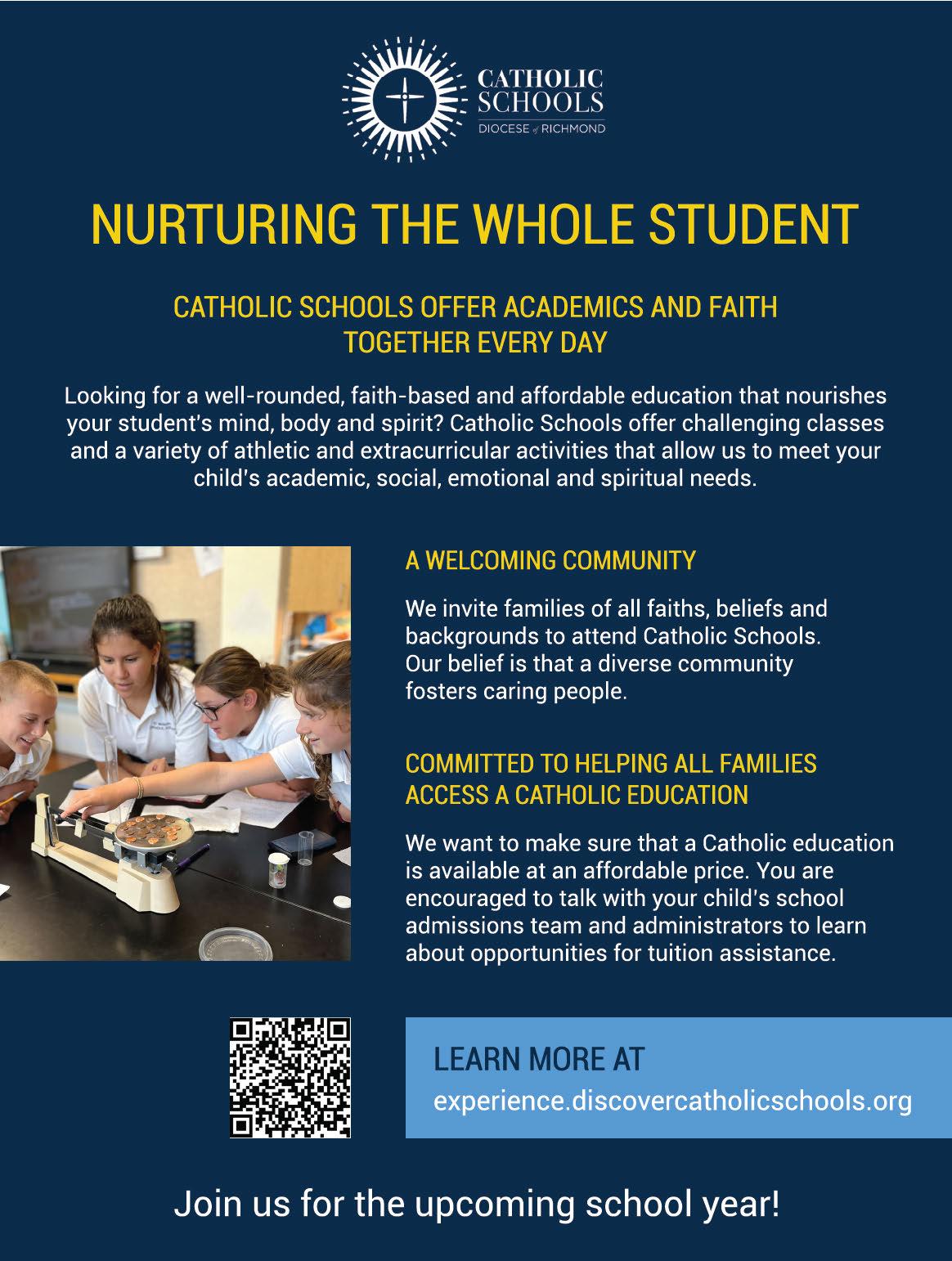











Two Richmond privateschool students will a end the University of Virginia this fall as Jefferson Scholars.

The merit-based scholarships that were awarded this year to 39 future Cavaliers provide full tuition, room and board for four years, as well as several enrichment programs sponsored by the Je erson Scholars Foundation.
Henry Bearden is also the winner of e Steward School’s highest honor, the Dixon Award, and Student-Athlete of the Year by the Virginia Sports Hall of Fame Foundation. He was captain of Steward’s varsity soccer team and the Richmond Kickers Elite team, and he has dedicated many volunteer hours to RVAccess, a program that o ers free athletic opportunities to those with special needs.
“Henry is relentlessly curious and accomplished: an intellectual, an athlete, a loyal friend and an excellent leader,”
says Head of School Dan Frank. “We look forward to seeing him flourish at UVA and beyond, just as he did during his years at Steward.”
Throughout her time in Collegiate School’s Upper School, Caroline Smith served as class president and was on the honor roll. She has been recognized as a fiction writer and poet, and she has researched algae and red tide pollution, as well as the impact of climate change on marine ecosystems and oyster populations. She served as president of RVAccess for three years and Oak GroveBellemeade Saturday Literacy Academy
for one year. Smith was also captain of Collegiate’s championship-winning varsity tennis team.
According to Jimmy Wright, president of the Je erson Scholars Foundation, one Richmond-area public school student was named a Je erson Scholar: Ishita Bakshi of Douglas S. Freeman High School. In addition, Blanly Teresa Rodriguez of Monacan High School is one of 17 recipients of the foundation’s Walentas Scholarship, which supports students who would be in the first generation of their families to earn a bachelor’s degree. —MN
AFTER A TWO-YEAR nationwide search, Collegiate School has a new, permanent head of school. Jeff Mancabelli is replacing the interim head of school, Wiliam “Billy” S. Peebles IV, who assumed the role in August 2022. He starts on July 1, 2024.
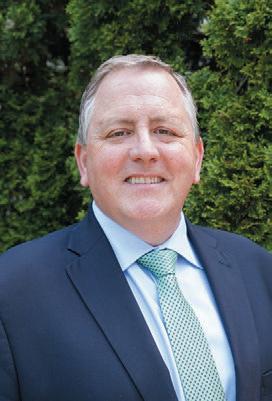
Mancabelli, unanimously approved by Collegiate’s Board of Trustees in May, currently serves as president of St. John’s College High School, a Catholic school in Washington, D.C. With more than three decades of experience in education, Mancabelli’s success comes from a combination of “prioritizing student success and fostering a thriving
school culture and community,” Carter Reid, chair of Collegiate’s Board of Trustees, said in a statement, which added that Collegiate’s board believes that Mancabelli’s skills and values align “seamlessly with Collegiate’s core values and aspirations.”

Under Mancabelli, St. John’s College High School increased enrollment by 24% and doubled its endowment, according to a press release.
Mancabelli said in a statement that his visit to Collegiate School was inspiring thanks to the “faculty and staff’s commitment to a challenging and supportive educational experience where
each student is known as an individual.” He added that he truly cares about providing personal attention and instilling a sense of family, which are staples in Collegiate School’s mission.
“Jeff embodies all of the characteristics we were searching for,” says Brandt Surgner, vice chair of the Board of Trustees, adding that he is a “seasoned independent school leader who puts students first” and has an extensive understanding of Collegiate’s master and strategic plans. “The Board of Trustees has full faith in Mancabelli,” Surgner says. “His experience and thoughtfulness will surely aid the smooth transition from interim to head of school in the coming year.” Will Thalhimer
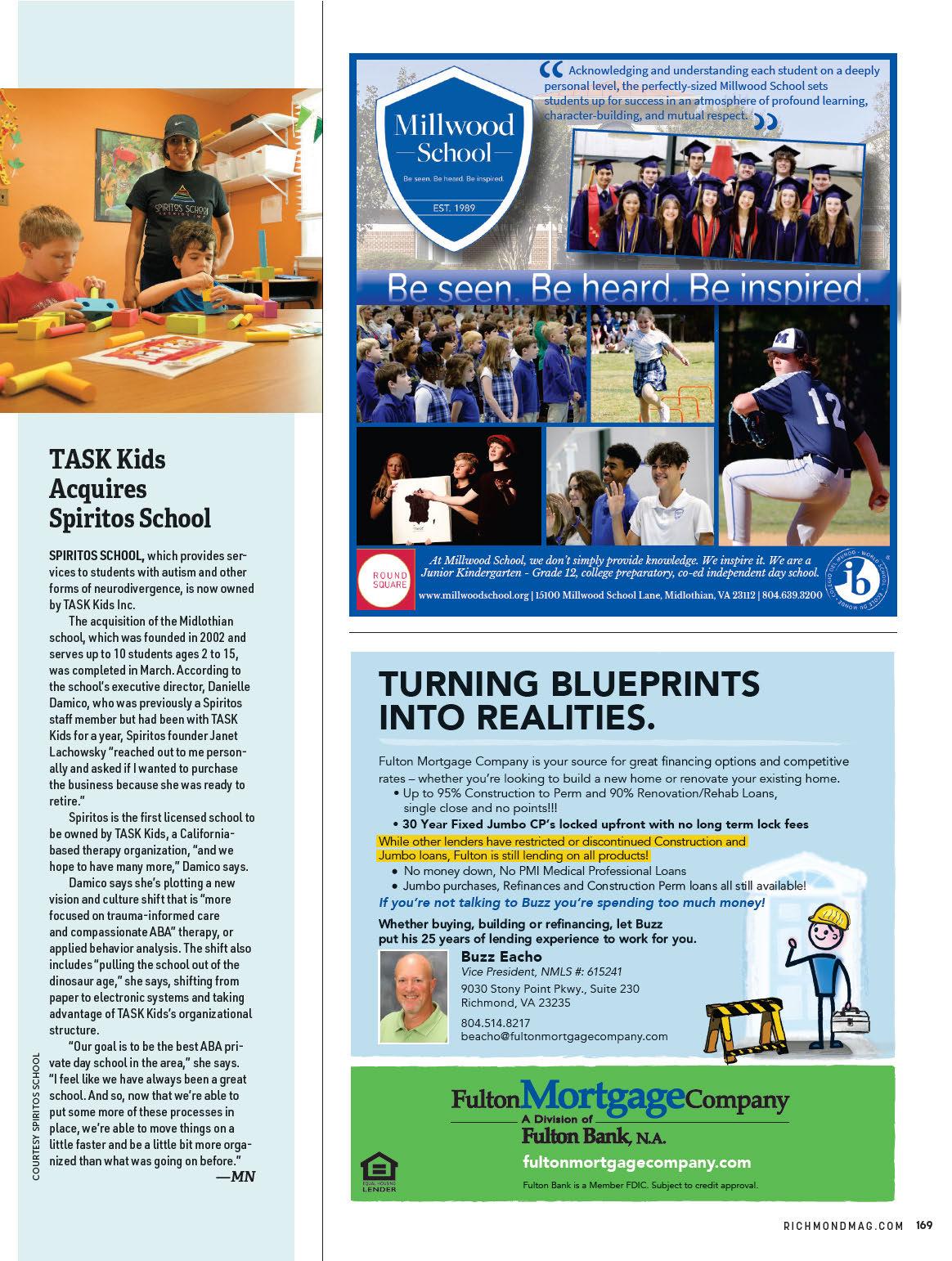
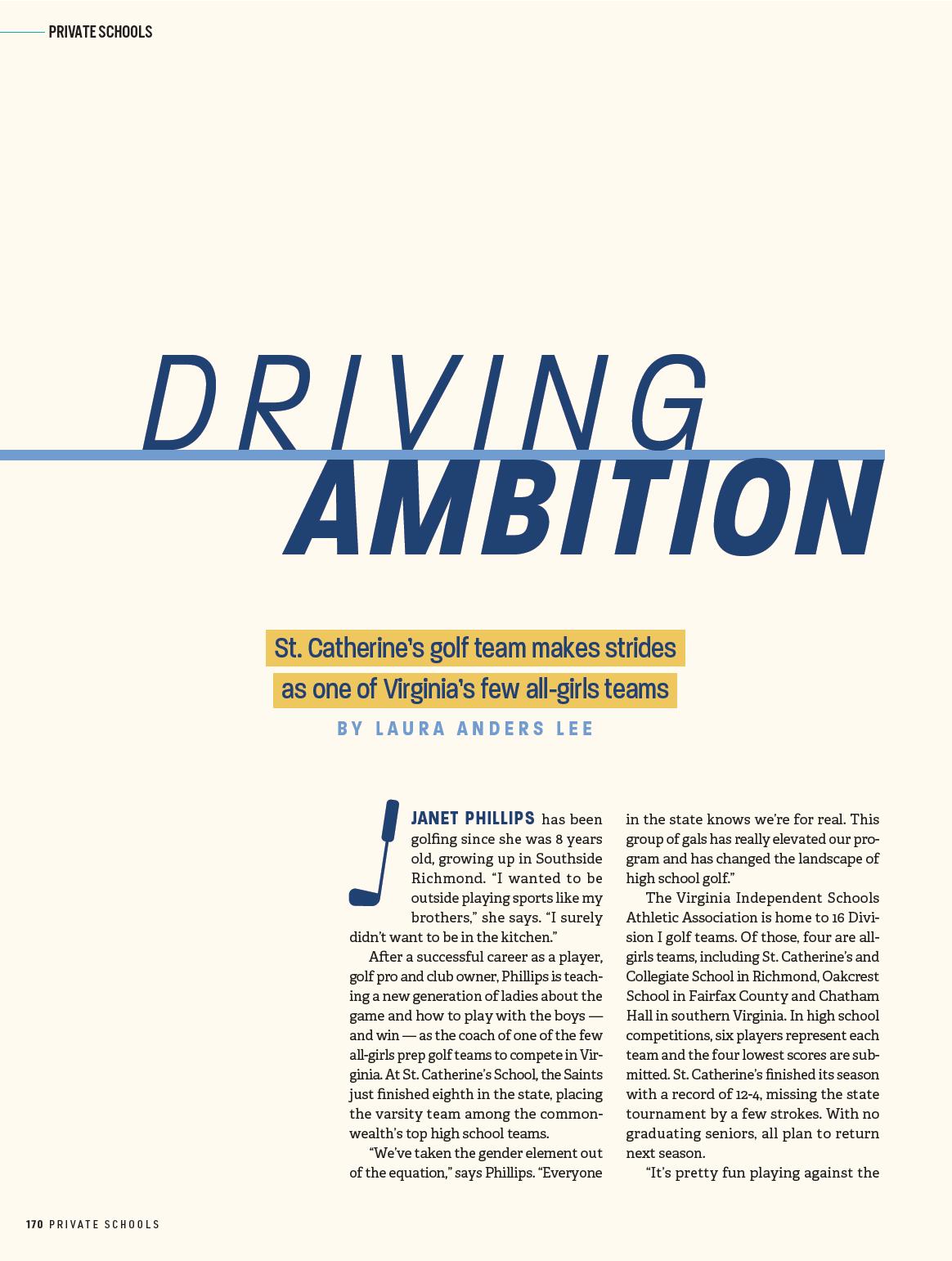
boys teams,” says varsity player Grace Anne Haggerty. “We don’t really care who we’re playing as long as it’s good competition.”
Because golfers may tee o from six starting points, players of all levels can compete equitably on the fairway. On a typical course, professional male golfers play o the black tees while more experienced men start from the middle white and blue tees. Women drive from the red tees, while seniors play yellow and youth play green, which is closest to the hole.
“We set up tees 15% less than where the guys tee o , and our goal is to have similar clubs hi ing into the greens,” says Phillips. “We’re not going to compete in a long drive contest against some of the be er guys, but we can be more accurate and hit right
in the fairway. We also work on our short game. Our forte is putting and chipping.”
Saints player Eliza Hershey says she was a li le nervous at first, but that quickly changed with a pep talk from Phillips. “Coach Janet took me aside and said, ‘You deserve to be here — you earned this spot,’ and that completely changed my mindset,” she recalls. Hershey says winning is gratifying when the boys underestimate them. “ ey’ll think it’s going to be an easy win, and we come out and beat them.”
e nine varsity players say they are grateful to have Phillips as their coach and mentor. “We’re lucky to have a coach
who’s actually a golf pro,” says Saints golfer Adelaide Goolsby. “And because she’s very involved with the LPGA, she understands the rules, answers our questions, helps with our golf swing and is very encouraging,” adds player Emma Dixon.
A er graduating from Monacan High School in 1984, Phillips played golf for James Madison University, then professionally for three years. She later moved back home, where she co-owned and ran Windy Hill Golf Course for 32 years. She also started the women’s golf program at the University of Richmond as well as Richmond’s first Special Olympics for golf. In 2006, she was awarded the PGA President’s Award, and the following year,

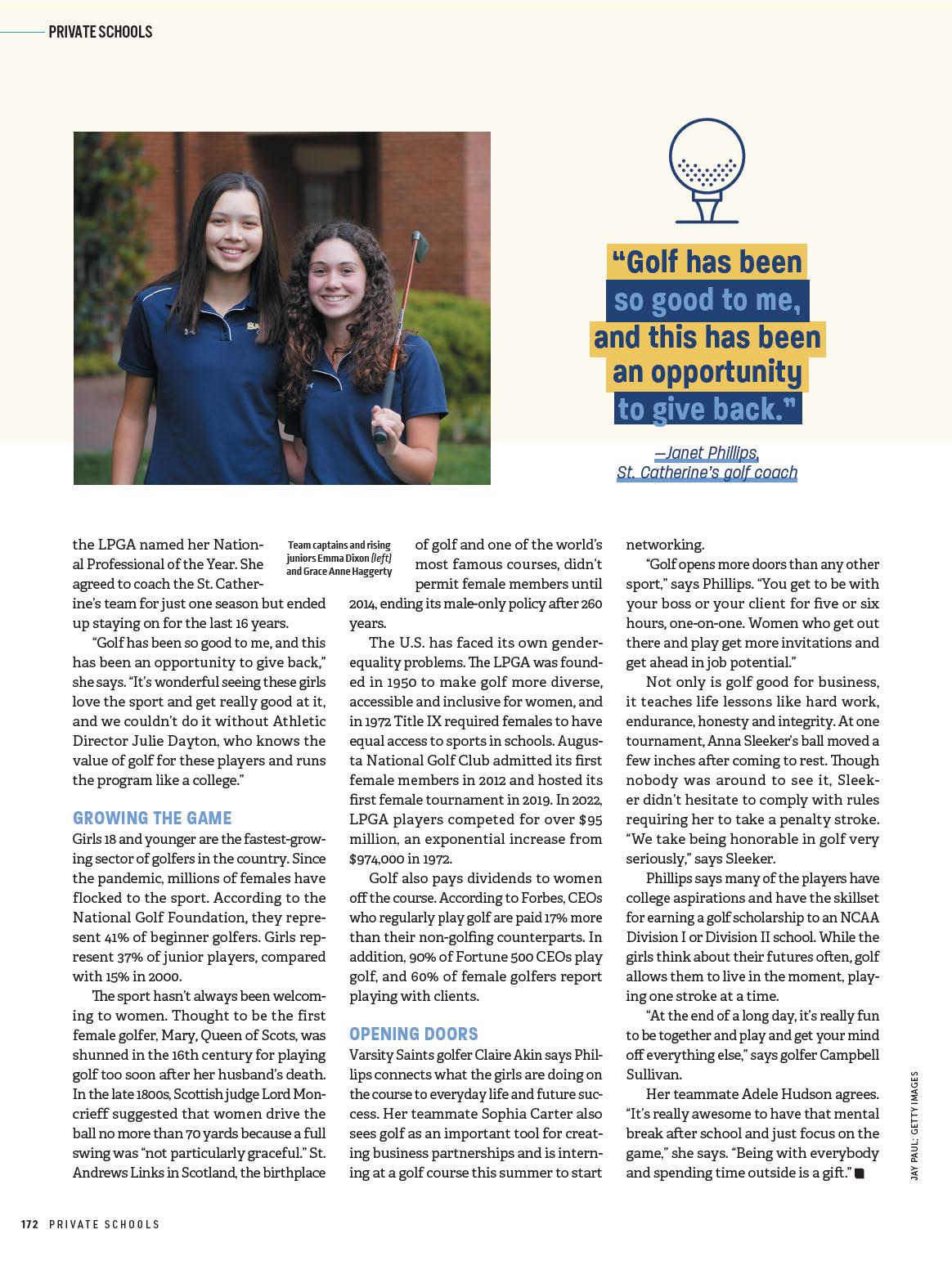
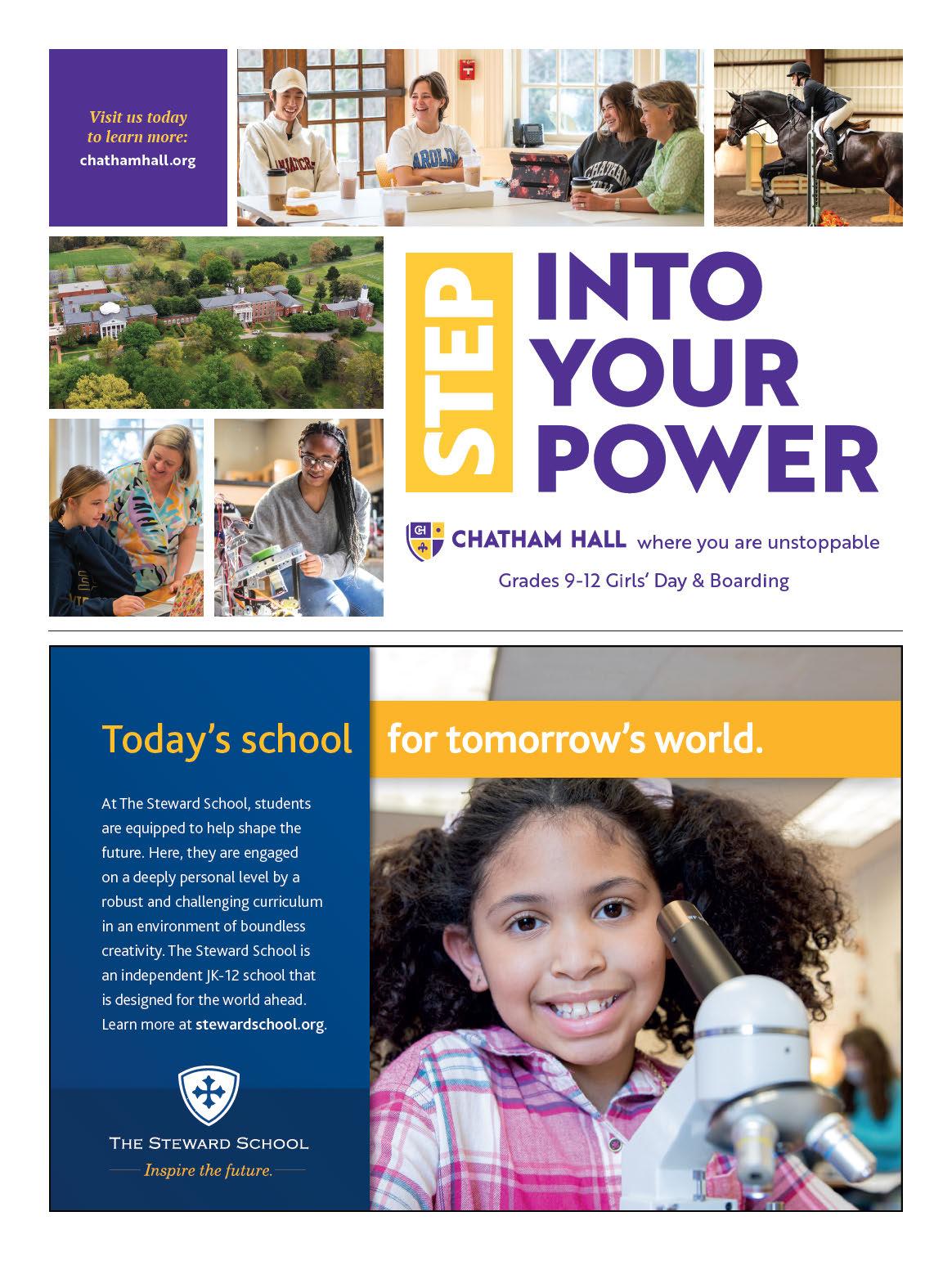

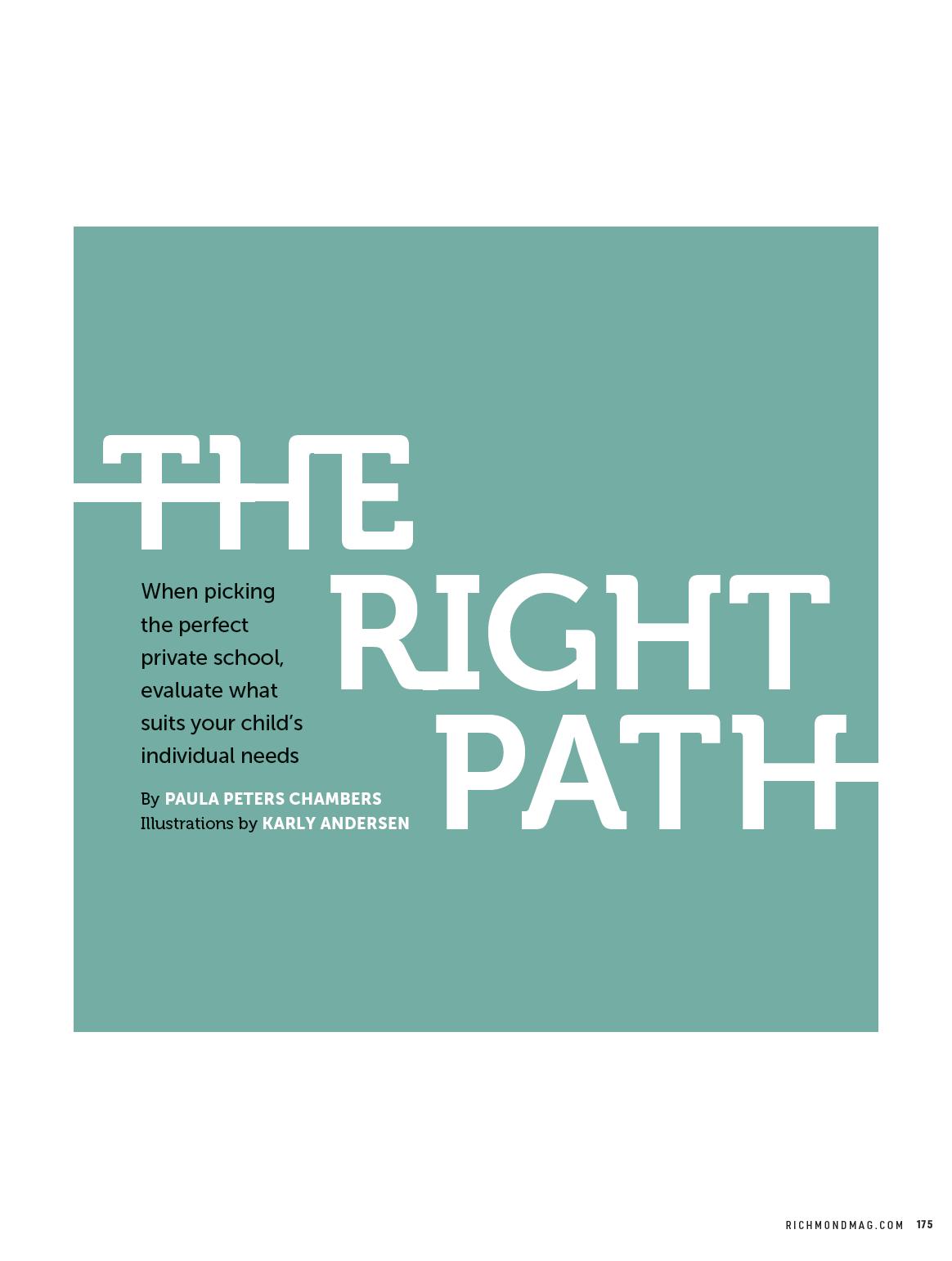
overwhelmed by the range of private school options available in metro Richmond, parents should feel optimistic that they can find a good fit for their child and family.
“Pretend you’re being investigators,” says Rachel Gladstone, an educational consultant with Westhampton Family Psychologists in Tuckahoe. “Try to see all the choices and options, and remember nothing is wri en in stone.”
Gladstone says it’s common for parents who a ended private schools themselves to seek a similar experience for their children. Other parents believe a private school would suit their child’s
needs better than than their assigned public school. It’s also possible that as a child progresses through their education, a di erent school se ing might be more appropriate. “ ere’s so much variability, with so many di erent people with di erent needs and circumstances,” Gladstone notes. “It truly is so individual, which is why careful consideration and a ention need to go into school choice.”
Courtney Rosenthal began evaluating private schools for her first child in summer 2021, with an anticipated enrollment in kindergarten in the 2023-24 school year. Rosenthal a ended private school for grades K-6 and then finished in public
schools; her husband, Matt, attended public schools for his K-12 education. eir motivation to seek a private option for their daughter stemmed from a desire to find a place that would nurture her love of the arts. “Her life is a musical,” Rosenthal says. “She’s always singing.”
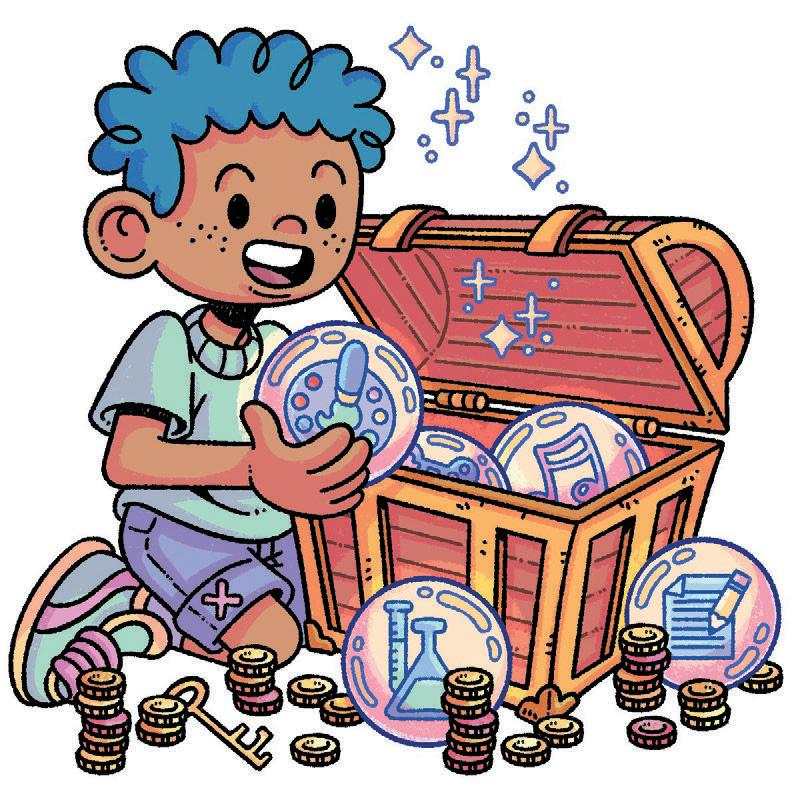
The Rosenthals set parameters on their search: K-12 programming and coed instruction with no religious a liation.
“That really narrowed the scope,” Courtney Rosenthal says. She and her husband assembled a list of questions and sent it to admissions directors at their top two choices. “ at set a framework for the discussions we had with admissions and leadership with both of the schools,” she says. “As my husband and I sat down
and discussed where we wanted to apply, we had answers.”
e family secured a seat for their daughter in the school of their choice — but in a junior kindergarten, or JK, classroom last fall, a full year earlier than they planned. “I realized that for many independent schools in Richmond, the admissions process really is for the JK year,” Rosenthal says. “ en there are only a handful of slots for kindergarten. We realized the numbers weren’t good if we waited, because there wouldn’t be many slots available.”
Margaret and Adam Preston had two children enrolled in their neighborhood public school when the COVID-19 pandemic began in spring 2020 — a daughter in second grade and a son in kindergarten. ey had been considering moving their daughter to a private school, so they were ready to make the leap to virtual learning o ered by the school they preferred.
“That was the time to set a good foundation in terms of learning and excitement for learning,” Margaret Preston says. “We wanted more challenge and customized work, and we felt we had done the process as best we could in [our] public school. You can’t fault anyone there, but they have the square they have to teach to. e anomalies, at both ends, are harder to pay a ention to.”
e couple’s process included gathering recommendations from friends and “being a li le old school. Write it all down and see where you are: priorities, nonnegotiables, what do they have [to o er],” she says. “A mom has an intuition as to what her kids need.”
en they took general admissions tours. ey paid a ention to the academic “extras” not available at their public school and observed smaller class sizes. At the end of one tour, as Margaret Preston was asking questions, the admissions director suggested the couple meet with the head of school. “We felt like we were their priority, even with a slew of folks in the admissions process,” she says. “We asked specific questions to see if they could fill in the gaps we were experiencing.”
Initially, the Prestons planned to enroll only their oldest child, but all three of their children are now at the same school. “We loved [the school], loved the community,” she says. “Once we got over there and realized the breadth of ‘specials’ and extracurriculars, we thought, ‘Why wouldn’t we do this for the boys?’”
Educational consultant Lindsey Melvin says the pandemic motivated some parents to move their children from public to private se ings. “ e demand [for private schools] was much greater than I’ve seen in a long time,” she says. “I’m curious to see [where we are now], but from 2020 into 2022, there was an absolute increase in interest in private schools.”
Melvin advises parents to research schools’ mission, size, costs and learning styles. She also encourages parents to go deeper. “I want them to do some soul-searching before they start looking,” she says. “ ey need to think about their own personal and educational values. Is it important for a school to incorporate the arts, time outdoors or religious faith or follow a certain educational approach, like [international baccalaureate] or classical? Sometimes, families don’t know.”
Most private schools require educational assessments, either administered by private psychologists or the schools themselves. A child may want an explanation about why that’s necessary. e child’s age also a ects the role they will play.
“With every year, it becomes increasingly important to involve them in discussion and dialogue,” Melvin says. “How do you know it’s going to be the right community? Explore all the ways the school o ers you to know that information: parent tours, shadow days, talking with parents of enrolled students. Is [the school] really what it sounds like?”
Even a er a family finds a school that fits their child’s needs, Melvin notes parents need to pay a ention, as circumstances
“[PARENTS] NEED TO THINK ABOUT THEIR OWN PERSONAL AND EDUCATIONAL VALUES ... SOMETIMES, FAMILIES DON’T KNOW.”
—Lindsey Melvin, educational consultant

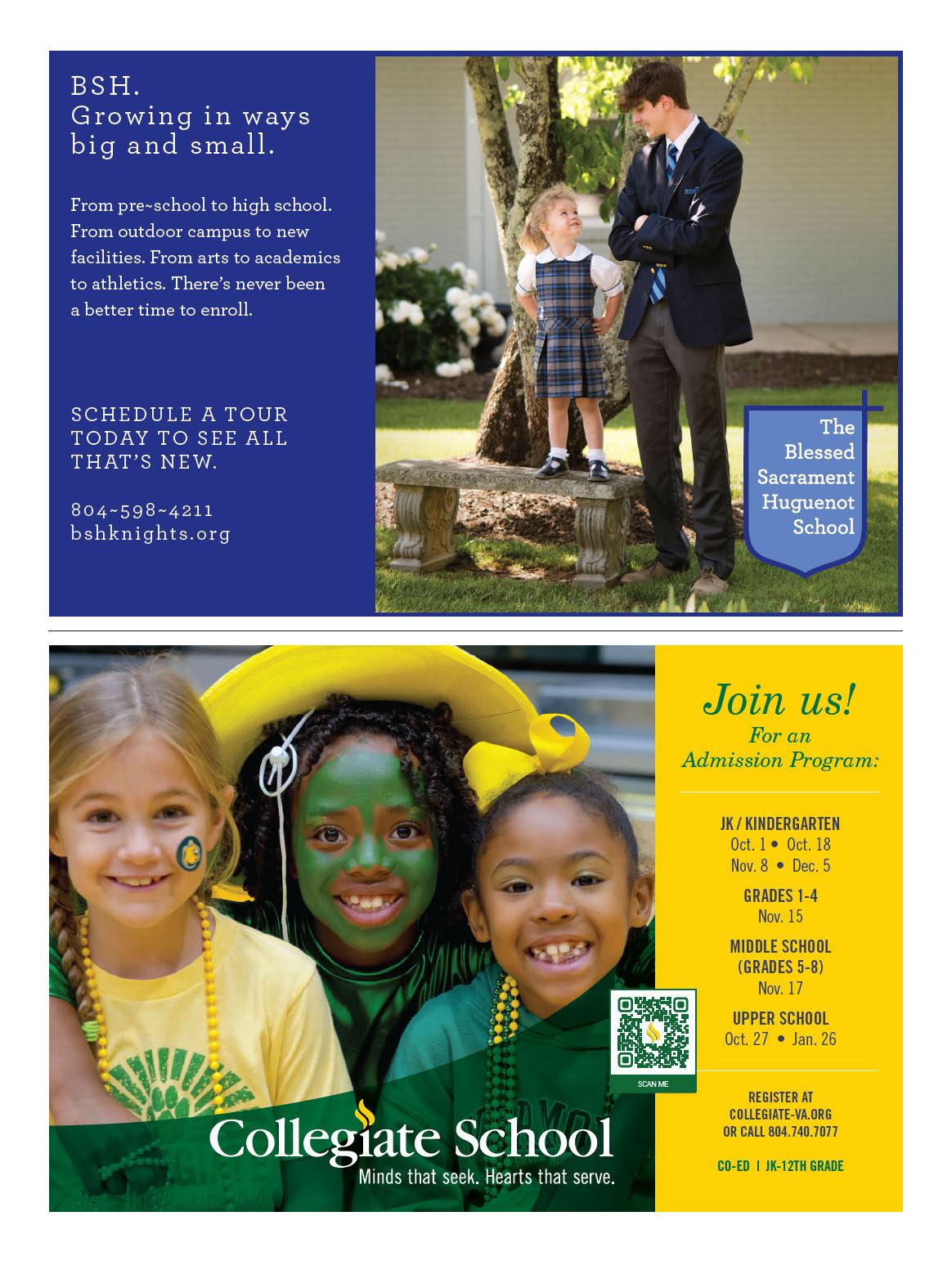
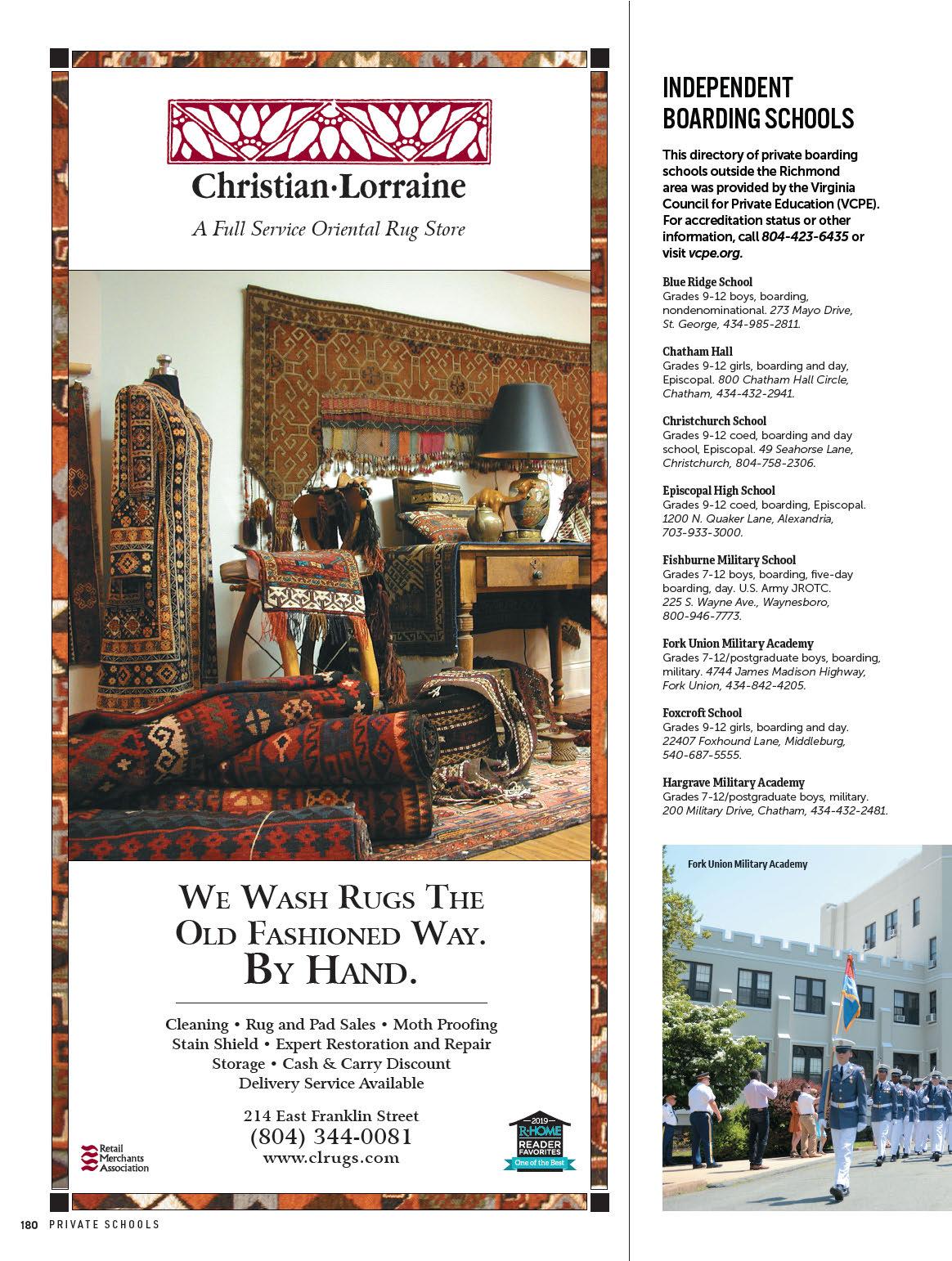
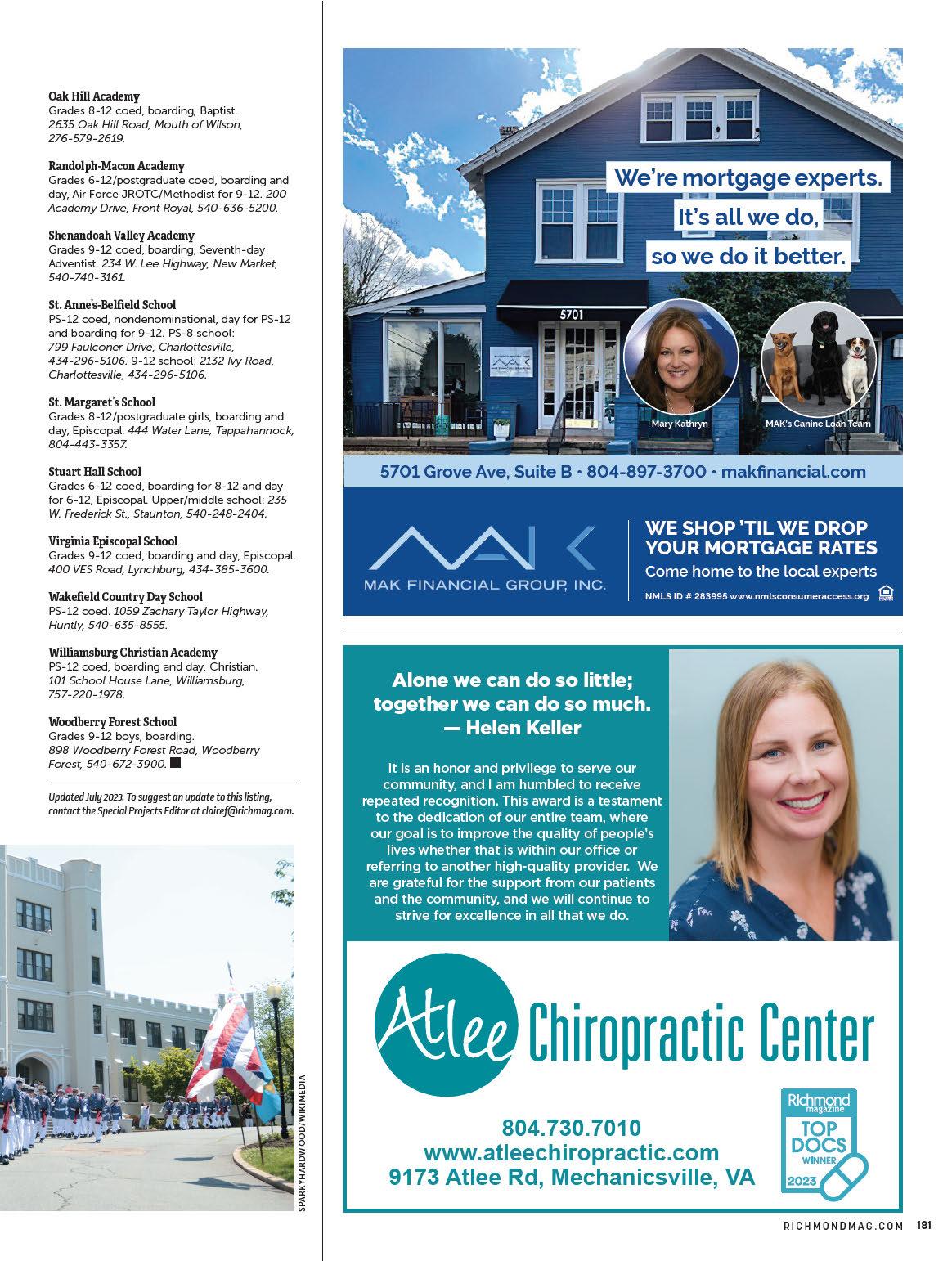
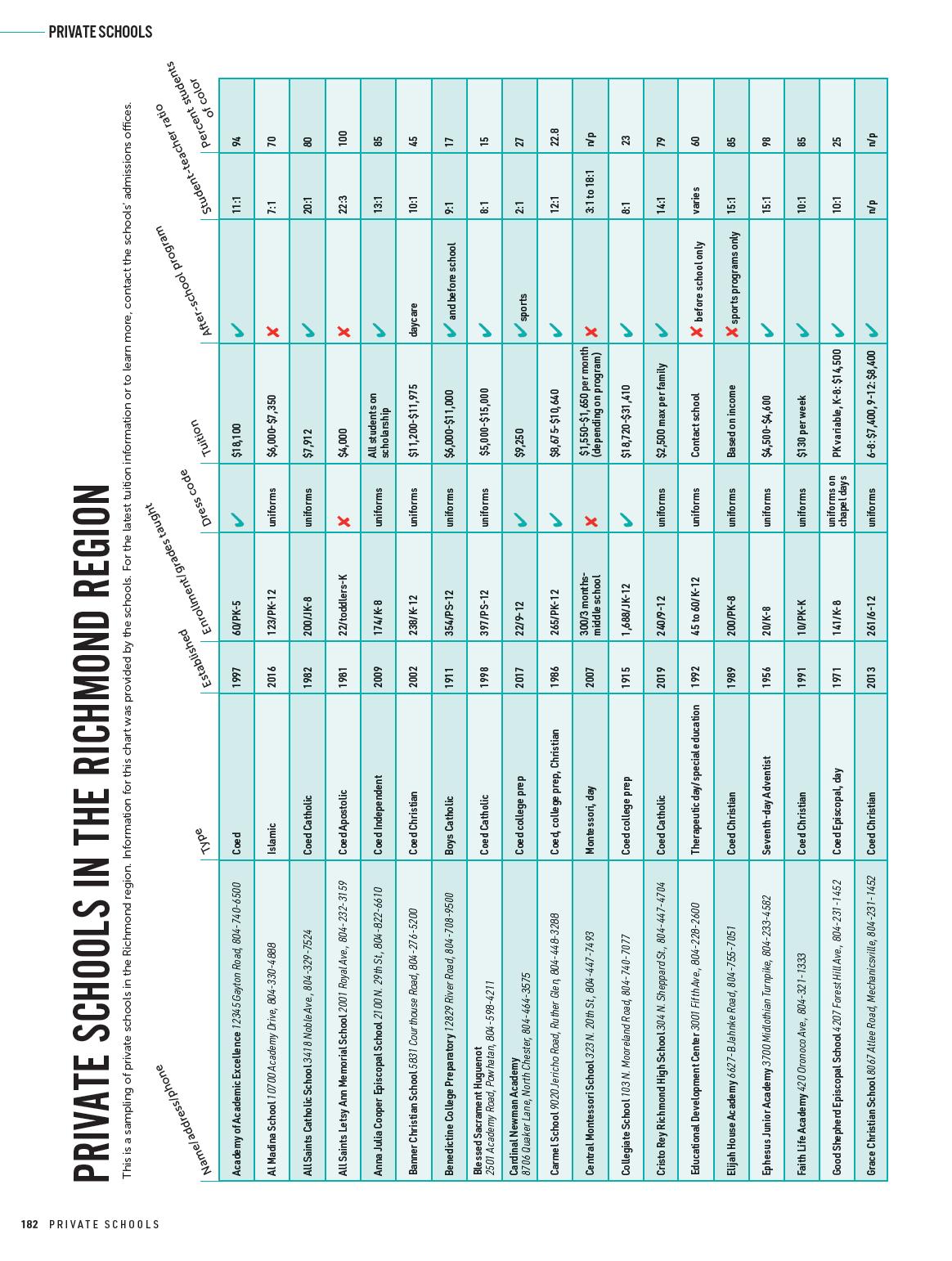
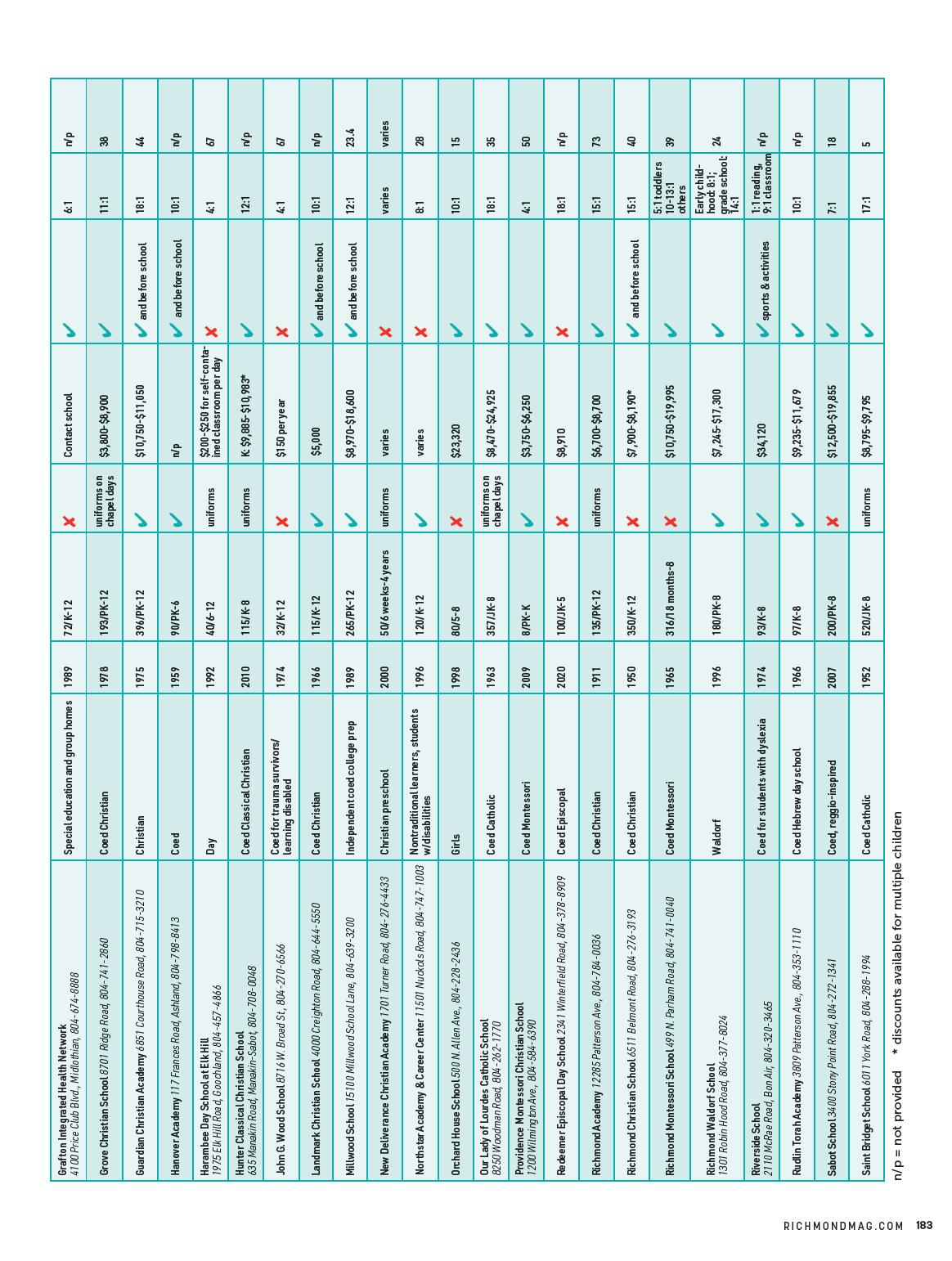

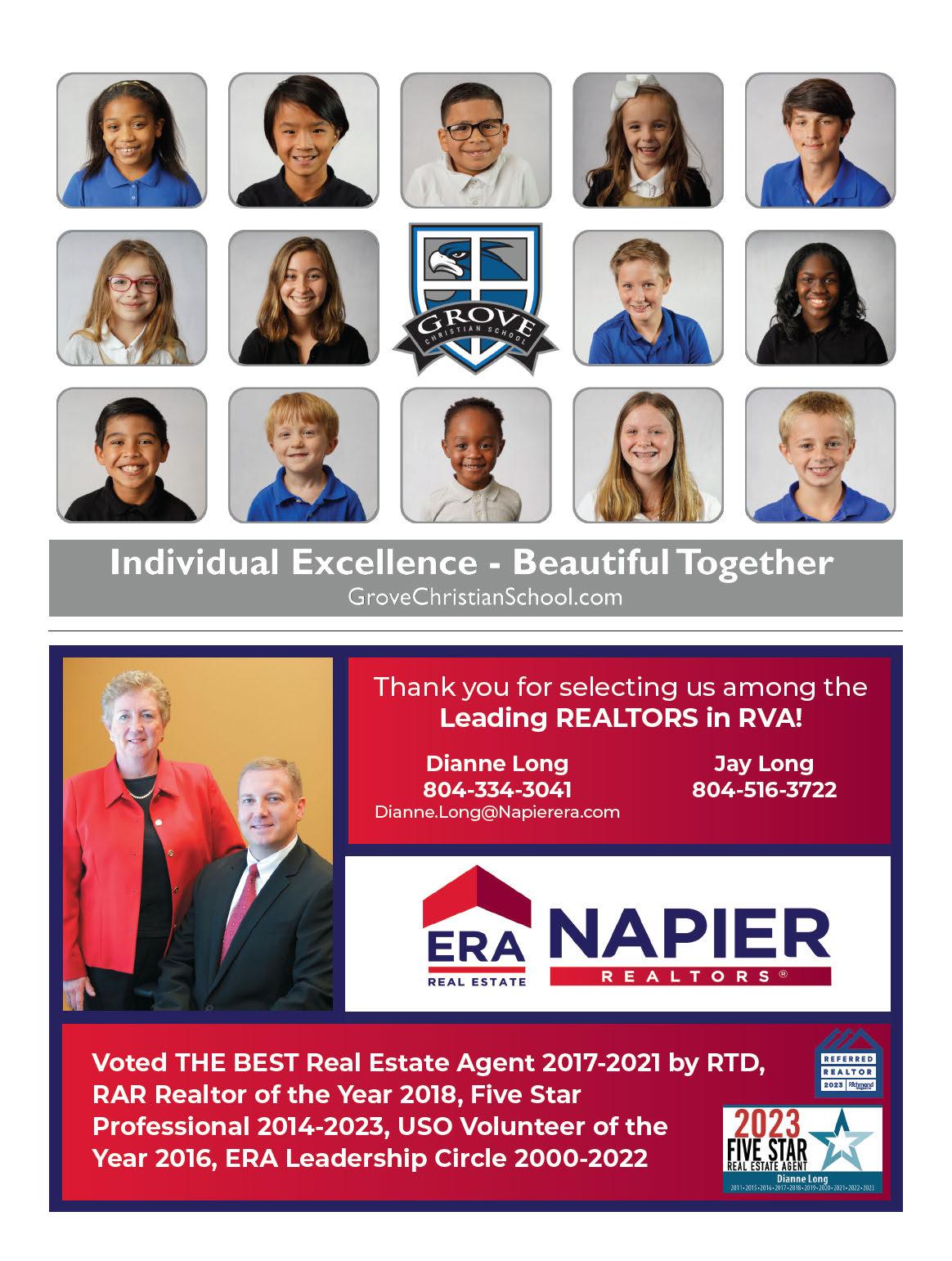
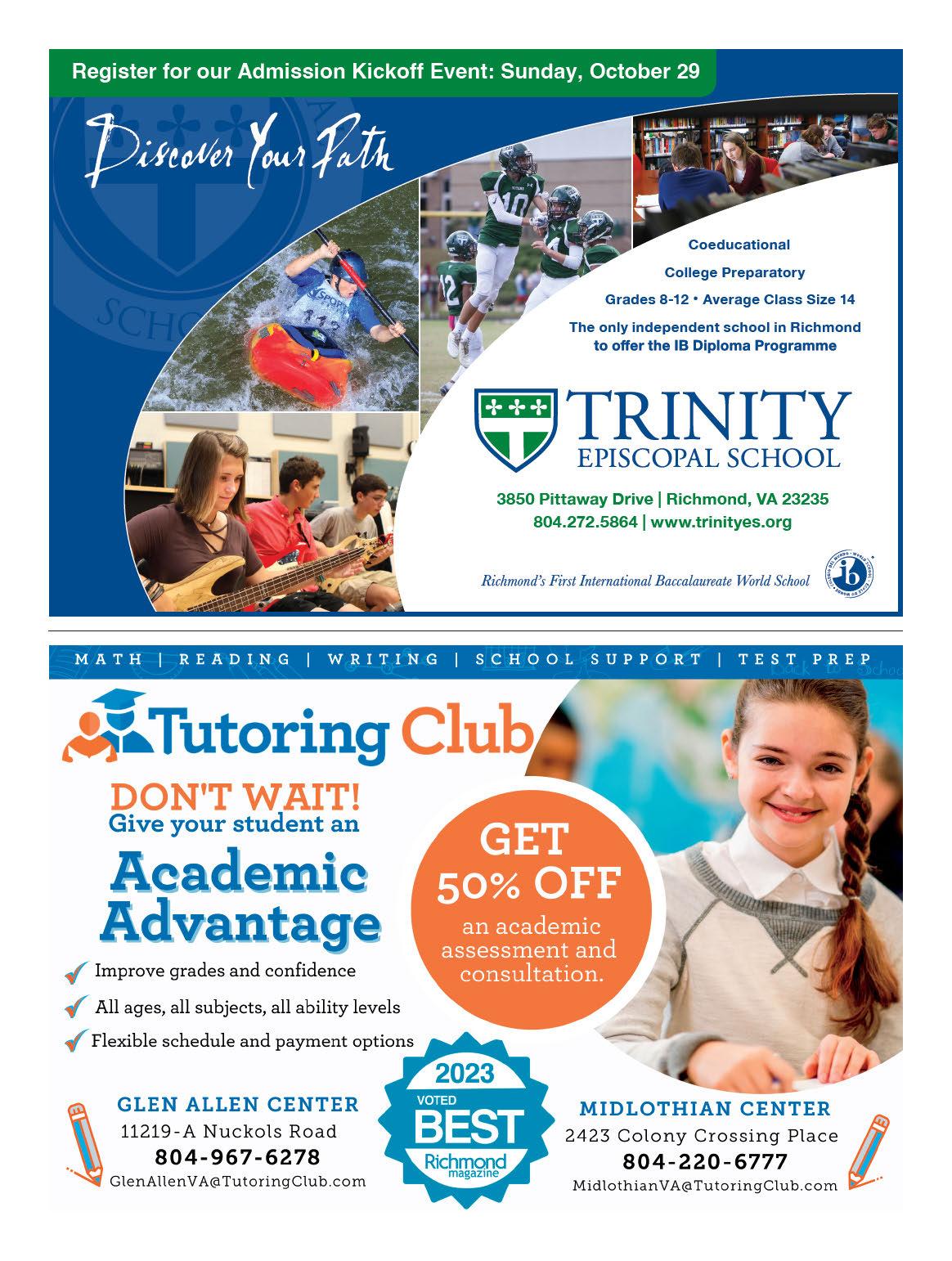

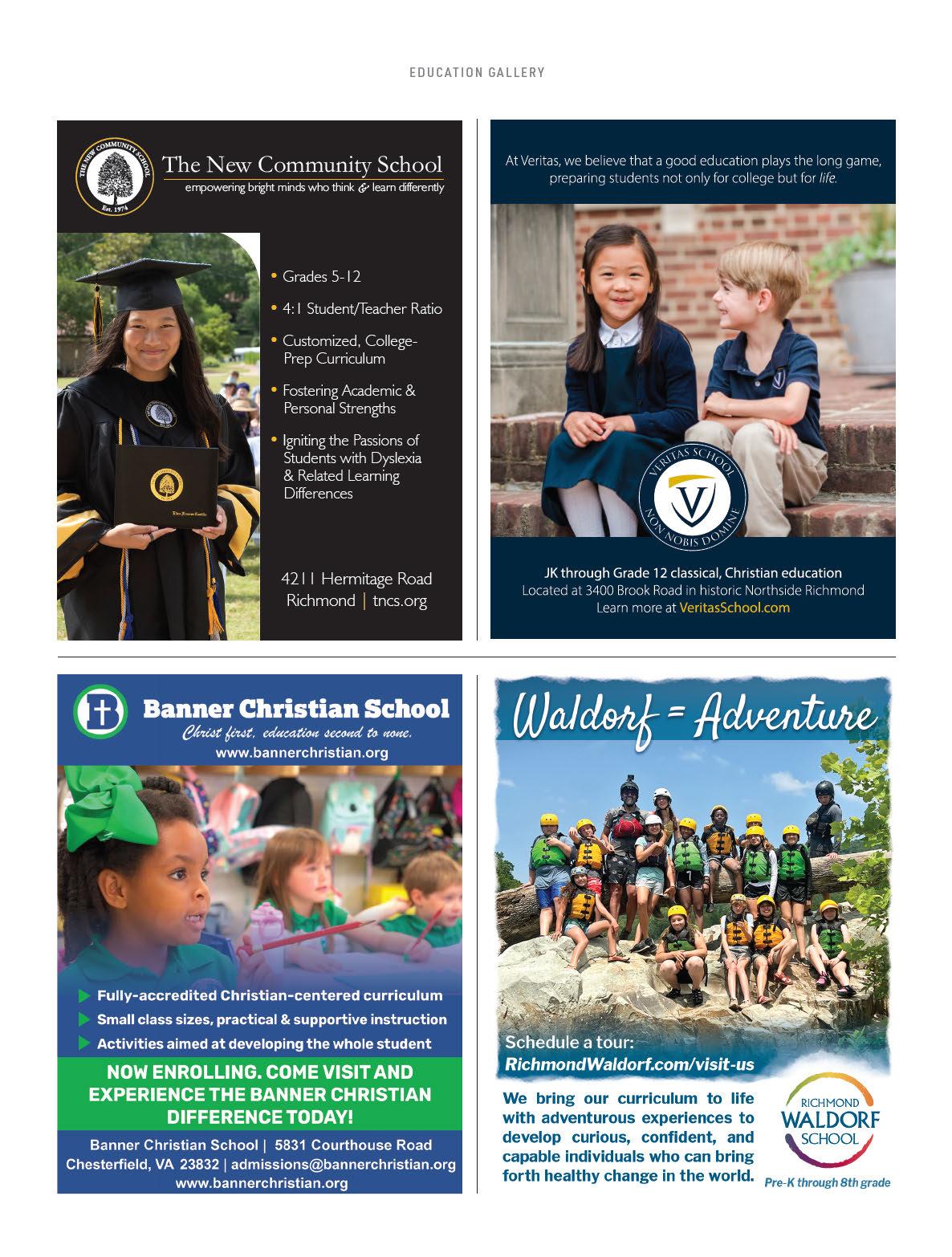
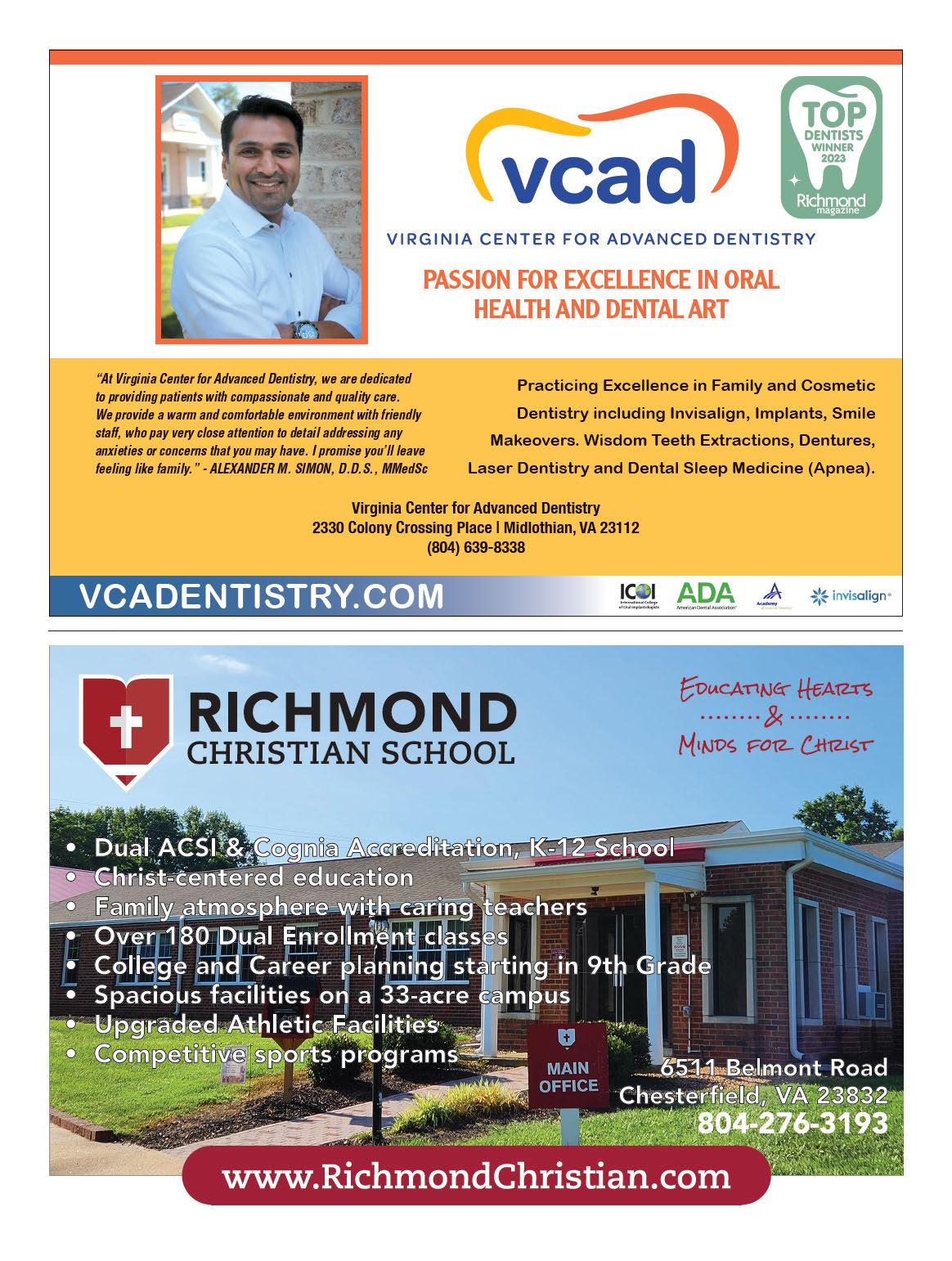
ith museumworthy fashion design, Riva Samee, a 16-year-old rising senior at St. Catherine’s School, is adding further evidence to fashion icon Ralph Lauren’s notion that “fashion is about something that comes from within you.”
She recently completed a 12-week course at the Virginia Museum of Fine Arts through its Teen Stylin’ program, where she worked with local fashion designers and studio art instructors to construct unique, wearable works of art featuring unconventional materials that were inspired by items in the VMFA collection.
Riva’s a nity for fashion began at an early age. “I would gravitate toward fashion books and games and just be fascinated looking in my mom’s closet,” she says. However, she was uncomfortable expressing herself through her family’s Pakistani culture. “I was the only South Asian girl in my elementary school.”
Moving frequently as a child, Riva a ended three elementary schools and faced the same issue at each. “I felt very insecure whenever people would come over” and see her grandmother dressed in traditional Pakistani clothing, she recalls. “Around my American friends, I didn’t want them seeing that side of me.” Riva says she would try to hide her Pakistani side through her choice of clothing. “Whenever I look at other people’s clothes, that’s an expression of their iden-
tity. I subconsciously used that to mask my true identity.”
A er making her own outfit for Eid, a Muslim holiday, at age 9, Riva was encouraged to pursue her interests as a potential career. With her parents’ support, she a ended a program for high schoolers at the Parsons School of Design in New York City at age 15.
Earlier this year, her art teacher at St. Catherine’s encouraged Riva to apply for VMFA’s Teen Stylin’ program. Between signing up and being accepted, she joined her family on a trip to Pakistan. “It was a great feeling to understand that part of my culture, where I didn’t feel like an outsider to it,” she says.
The trip convinced her that she wanted to connect her two “identities” in clothing.
The program’s theme, ”Illusion,” spurred Riva to work on an outfit that literally fused Pakistani history and culture with her American identity based on a statue of an Egyptian pharaoh assigned to her by the program. e dress uses Pakistani rice bags and CDs. Riva says the bags and CDs are a visual metaphor for facades and the illusion of a stable society and represent hiding and reflecting “something o of yourself onto something else” to echo her own work embracing her Pakistani identity.
Riva completed the program in May and plans to pursue a career in fashion and design. Her advice to others who want to pursue their passions is to “get uncomfortable” — to step out of your comfort zone to see if you can pursue your dreams. Riva says it’s all worth it.
